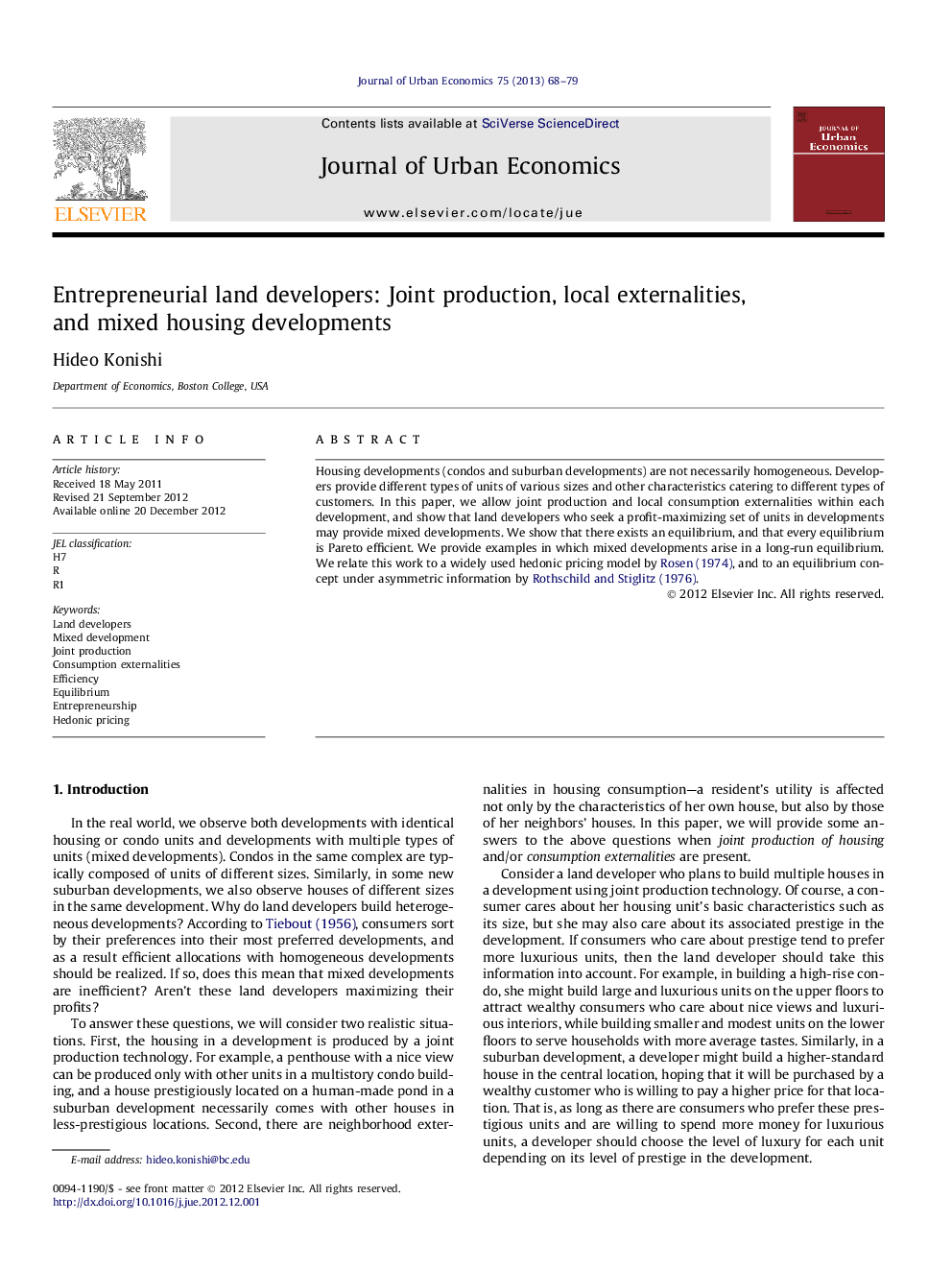| Article ID | Journal | Published Year | Pages | File Type |
|---|---|---|---|---|
| 971215 | Journal of Urban Economics | 2013 | 12 Pages |
Housing developments (condos and suburban developments) are not necessarily homogeneous. Developers provide different types of units of various sizes and other characteristics catering to different types of customers. In this paper, we allow joint production and local consumption externalities within each development, and show that land developers who seek a profit-maximizing set of units in developments may provide mixed developments. We show that there exists an equilibrium, and that every equilibrium is Pareto efficient. We provide examples in which mixed developments arise in a long-run equilibrium. We relate this work to a widely used hedonic pricing model by Rosen (1974), and to an equilibrium concept under asymmetric information by Rothschild and Stiglitz (1976).
